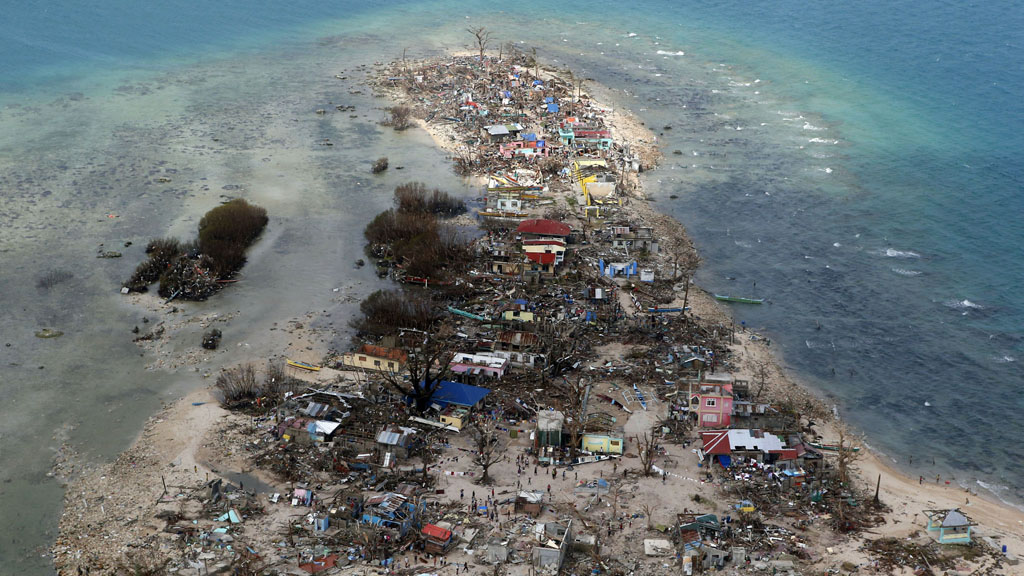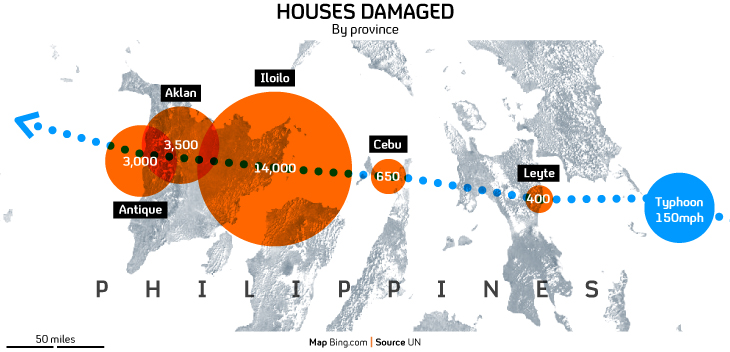Typhoon survivors now face starvation and water shortage
Across the Philippines, the scale of the destruction wrought by Typhoon Haiyan is becoming clear. But President Aquino has suggested the death toll could by a quarter of the 10,000 initially reported.
Aid is finally starting to get through to the worst-hit areas in the Philippines. But the suffering of the Filippino people seems without end.
Just as the first consignments of aid are arriving, another storm has hit the very area where the typhoon struck just four days ago, leaving death and destruction on a huge scale.
In the city of Bogo, on Cebu island, there are few buildings left standing – a scene repeated across the region. Meanwhile, Channel 4 News Asia Correspondent John Sparks travelled from Cebu to Leyte island, which has been worst hit by the impact of Typhoon Hiayan (see video above).
‘As fast as we can’
Meanwhile, the United States and Britain have dispatched warships to the area to support aid efforts.
Crew members of the USS George Washington, which carries 5,000 sailors and more than 80 aircraft, were recalled from shore leave in Hong Kong on Tuesday to head to the Philippines.The nuclear-powered aircraft carrier will take two to three days to arrive at the Philippines, along with four other navy ships.
“The weather is pretty bad out there, so we are limited by seas and wind,” said Captain Thomas Disy, commander of the USS Antietam, a missile cruiser that is part of the carrier group. “But we are going to be going as fast as we possibly can” (see video, above).
Britain is sending the HMS Daring, a navy warship, from Singapore to the Philippines.
The Daring will bring with it equipment to turn seawater into drinking water and a military transport aircraft, Prime Minister David Cameron said.
‘Calamity’
International relief efforts continued to escalate on Tuesday, as the Philippine government struggled to get relief to remote areas of the country hit by the super-typhoon.
Countries and international aid organisations have pledged money, supplies and military and medical assistance to the country, where it has been estimated that 10,000 people have died.

On Monday, Philippine President Benigno Aquino declared a “state of national calamity” as the army struggled to reach parts of the country cut off by the destruction Haiyan wrought on infrastructure.
UN aid chief Valerie Amos, who has travelled to the Philippines, released $25m for aid relief on Monday from the UN Central Emergency Response Fund.
Ms Amos and the Philippines government are due to launch an appeal and action plan on Tuesday to deal with the disaster.

‘Expect the worst’
The death toll from the disaster could be set to rise, as officials in Tacloban, a city at the heart of the carnage, said 10,000 could be dead in the city alone. Figures for the death toll in remote parts of the archipelago are currently unobtainable.
Read more in Alex Thomson's blog: Typhoon Haiyan: new life amid the carnage
John Ging, director of operations at the UN Office for the Coordination of Humanitarian Affairs, said “many places are strewn with dead bodies” that need to be buried quickly to prevent the outbreak of a public health disaster.
“We’re sadly expecting the worst as we get more and more access,” he told reporters at the United Nations in New York.
-
Latest news
-
Debate: how should the arts be funded as Israel funding boycotts grow?7m

-
Operation Black Vote: quarter of BAME adults not registered to vote in UK4m

-
Home Secretary demands explanation after Surrey Police ram cow with vehicle4m

-
Princess Kate makes first public appearance since cancer diagnosis2m

-
Labour rules out capital gains tax on sale of homes | Election ‘243m

-




